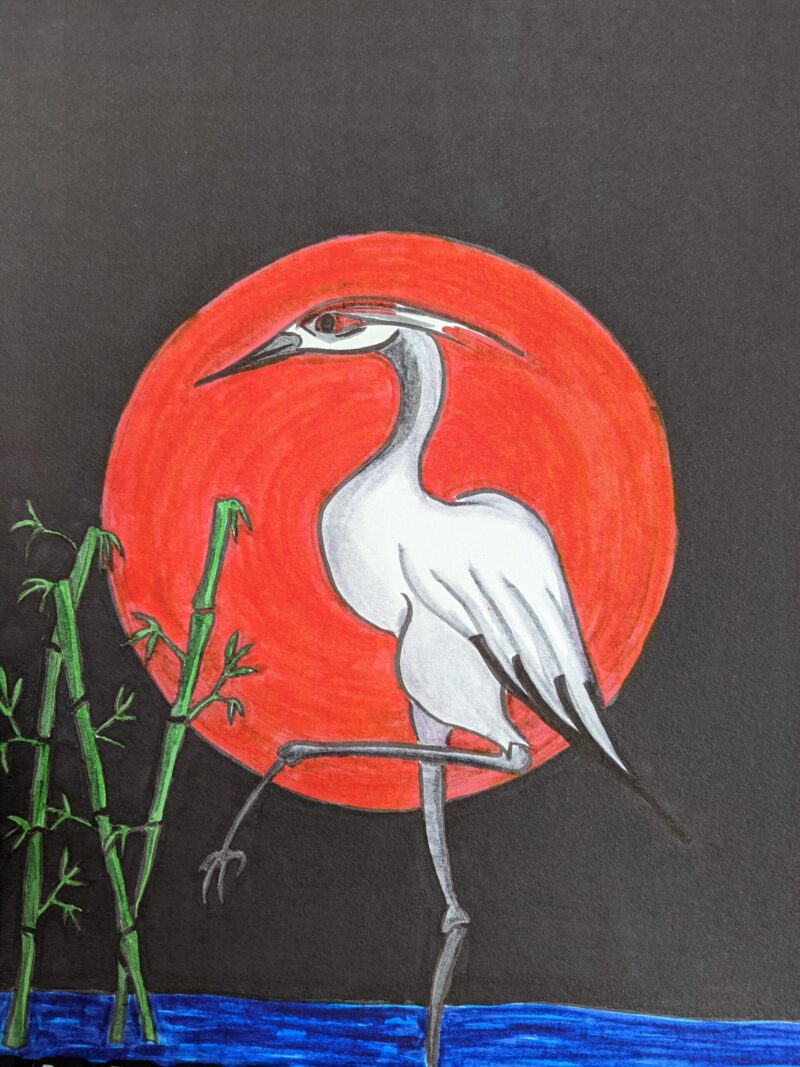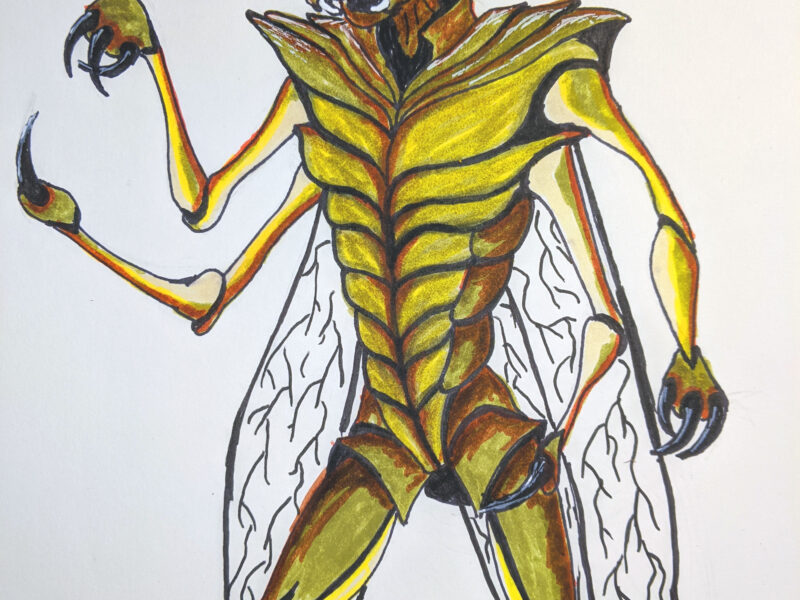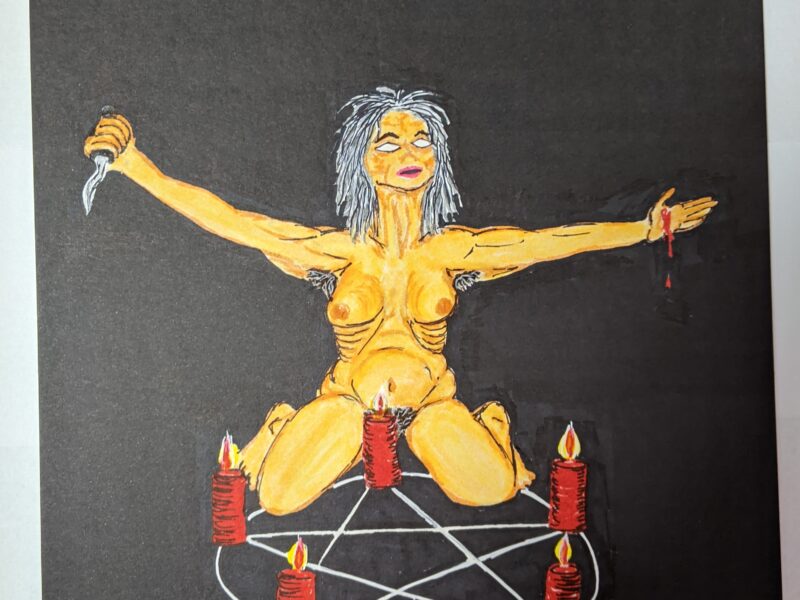This drawing is one I was really happy with when I did it. Mainly because I love the aesthetic of very simple Zen art, and I have always struggled to use the correct lines to capture an images beauty in a minimalist fashion.
This is still a poor mimicry of a traditional art style that I love, but its not a bad image all and all, and I like it. Here is some background on Zen art and the symbolism of cranes in it.
Zen art, deeply rooted in the principles of Zen Buddhism, embodies simplicity, harmony, and tranquility. It often seeks to capture the essence of nature and the profound interconnectedness of all things. Within Zen art, symbolism plays a significant role, conveying deeper meanings and inviting contemplation.
Cranes, majestic birds revered in many cultures, hold special significance in Zen art. Their graceful movements and elegant appearance make them powerful symbols of longevity, wisdom, and transcendence. Here’s how cranes are often depicted and what they symbolize within Zen art:
- Grace and Elegance: Cranes are often portrayed with meticulous attention to detail, capturing their fluid movements and serene demeanor. This portrayal reflects the Zen principle of effortless action (wu wei), where gracefulness arises from a state of inner harmony and mindfulness.
- Longevity and Immortality: In Japanese and Chinese culture, cranes are associated with longevity and immortality. It’s believed that cranes can live for centuries, and they are often depicted alongside pine trees, another symbol of longevity. In Zen art, cranes symbolize the timeless nature of existence and the pursuit of enlightenment, which transcends the boundaries of time and space.
- Transcendence and Enlightenment: Cranes are often depicted in flight, soaring high above the earthly realm. This symbolizes the journey towards spiritual enlightenment and the transcendence of mundane concerns. In Zen philosophy, enlightenment is seen as a state of profound awareness and liberation from suffering, akin to the freedom experienced by a bird in flight.
- Balance and Harmony: The graceful posture of cranes, with their long necks and outstretched wings, embodies a sense of balance and harmony. In Zen art, this balance represents the interconnectedness of all things and the harmonious coexistence of opposites, such as yin and yang, light and dark, or form and emptiness.
- Mindfulness and Presence: Cranes are highly alert and attentive creatures, embodying the Zen principle of mindfulness and presence in the moment. In Zen art, their watchful gaze reminds viewers to cultivate awareness and be fully present in each moment, appreciating the beauty and wonder of existence.
Overall, cranes hold a profound symbolism within Zen art, inviting viewers to contemplate the interconnectedness of life, the pursuit of spiritual awakening, and the timeless beauty of the natural world. Their presence reminds us to embrace simplicity, find harmony in the present moment, and cultivate inner peace on our journey towards enlightenment.



